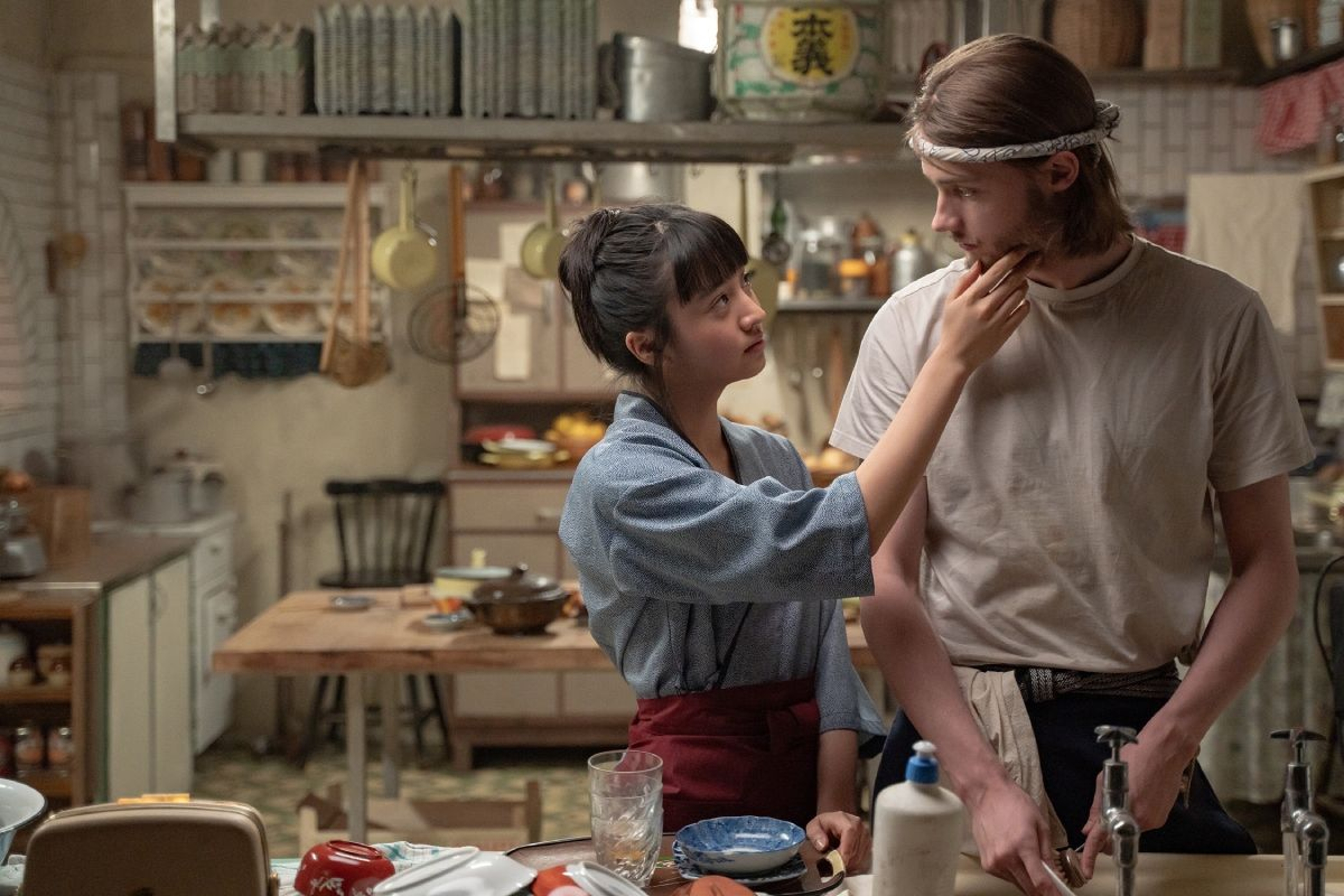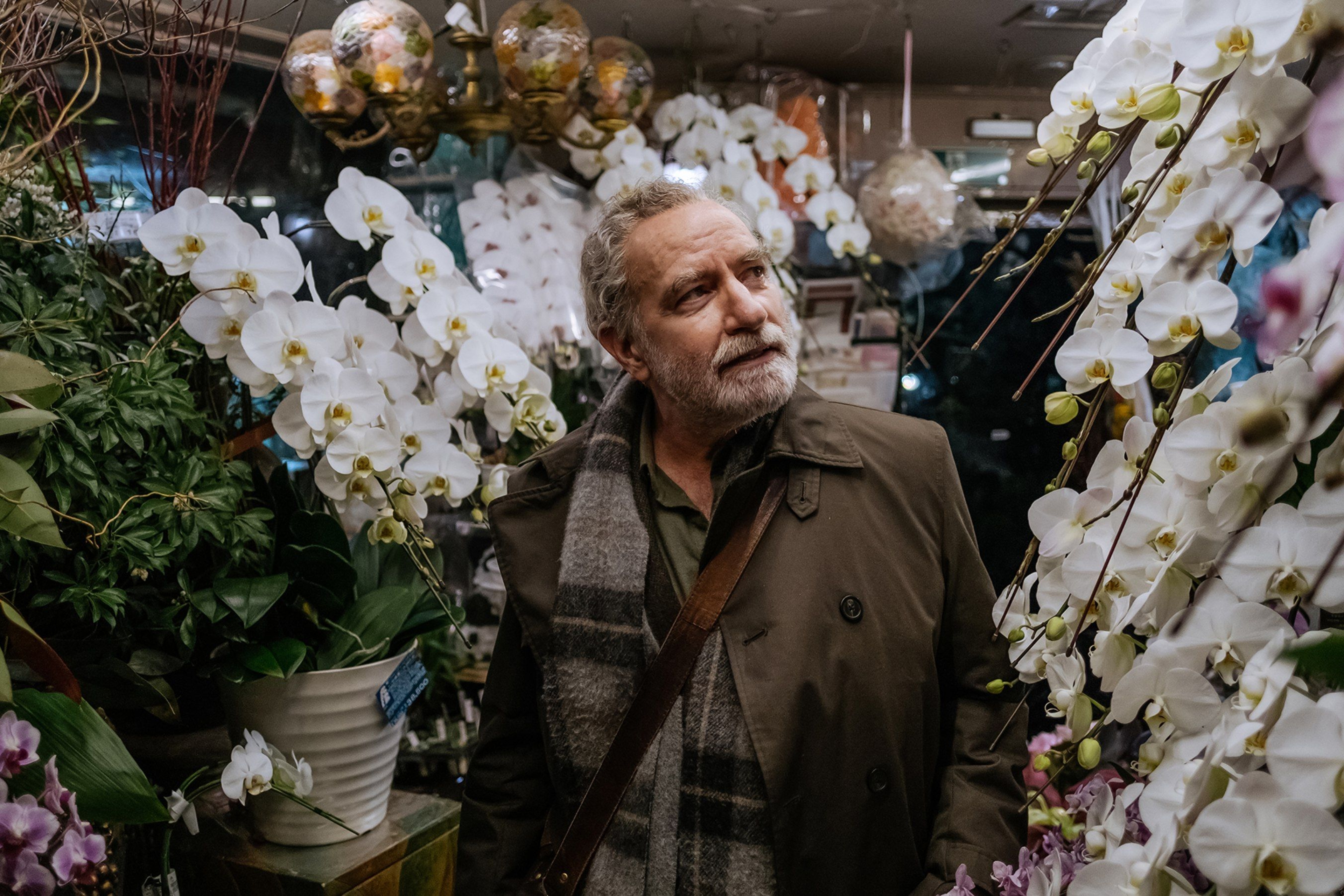In Baltasar Kormákur’s Touch—co-written by Kormákur and the novel’s author, Ólafur Jóhann Ólafsson—an older man leaves his native Iceland to travel across multiple continents and into the past to find the great love of his life. When Kristofer (Egill Olafsson) flies to England, he recalls how his younger self (Palmi Kormákur) fell deeply in love with Miko (Kōki). 50 years later, he is determined to find out what happened to the woman he adored.
Filmmaker Kormákur worked with his longtime collaborator, cinematographer Bergsteinn Björgúlfsson, to give a unique and defining look to the movie’s different locations and time periods. More than simply orienting the viewer, Björgúlfsson’s lyrical camera work imbues the landscapes and locales with an emotional resonance. The Hollywood Reporter writes, “The drama’s scope is enhanced by Bergsteinn Björgúlfsson’s graceful cinematography across three countries.”
We spoke with Björgúlfsson about using the camera to breathe emotions into the film’s story.
Touch is now playing in theaters — so get your tickets!
Official trailer for Touch
You worked with Baltasar Kormákur on a number of projects. What did he tell you about Touch prior to starting production?
When Baltasar approached me for this project, he told me he wanted us to do something we had never done before, a very touching human story, and he asked me to help him find a way to tell that story. I had read the novel before, and, of course, I had an image in my head from the book. But once I signed up to shoot the thing and went through the prepping, the image started to change. I needed to find ways to express those images to the team. I knew I wanted the color palette for the different places and time periods to be distinct. The production designer, Sunneva Ása Weisshappel, gave a lot of input on the film’s palette, and together, we ended up with this unique look.
What was the biggest creative challenge?
Creating London as it would have been in 1968 in London today was probably the biggest challenge. Using cars to hide modern things is the easiest way to change the time period, but it has become very expensive to rent old cars in London. We used other methods, like redressing everything and learning how to be very clever in choosing the camera angles.
How did you work to differentiate the different time periods and places cinematically?
For me, it was always clear that past London should be soft and warm, like the feeling that old Kodak film stock creates. Since this was the time that Kristofer fell in love, we wanted the look to be warm and soft, like how things feel when you are in love. For these scenes, I chose to use an older, one-of-a-kind prime lens kit, which was custom-made for the cinematographer Sven Nykvist, back in the day when lenses were not as fast as they are today. These lenses give a very special, soft look. They also create a lot of flares, which can be a challenge for the focus puller, but I love the look they create. We also experimented with shooting different formats for the past and the present—4:3 and 2.39:1, respectively—but we gave up on that because it proved too distracting to the flow of the story.
For Iceland and the present, I wanted things to be colder and less saturated, a sort of gray, everyday-life feeling. I chose ARRI Master primes because of their extremely sharp image. I feel today’s images are always too sharp and decided to use that to help express the grief of Kristofer’s present world.
When he starts traveling to search for his lost love, the colors slowly become more vivid and alive. When he arrives in Japan, the palette becomes even richer and stronger, although it never reaches the warmth of the nostalgic period of love. I wanted to emphasize the idea that you can never relive the feeling of your first love, that time when you are young and your whole life—with all its endless possibilities—is in front of you.

Kōki and Palmi Kormákur in Touch
Can you talk about how you used the framing to tell the story?
I wanted the framing and flow of the camera to be as effortless as possible. I really don’t like it when the camera distracts your attention from watching the film. Camera movement should just be a device for telling the story without drawing too much attention to itself. Every move needs to be motivated by the things happening in the frame, and you should feel like you are a participant in the story.
What was it like shooting in such a variety of locales?
Shooting in such different locations as London, Iceland, and Japan can be challenging. We would have to adapt to the way things are done by the locals and how they approach shooting on location. But the trick is to use this to your advantage. Shooting in tight locations in London and Japan forced us to be focused; we had to approach wide shots differently or skip them altogether. In Iceland, where you have endless choices of beautiful vistas, we opened things up. I decided to use those wide landscapes to express Kristofer’s sense of loneliness.
What did you find most satisfying in shooting Touch?
Shooting Touch was a very rewarding experience. Baltasar and I have done so many projects together that we don’t need to discuss very much on set. This film being more about emotions and feelings than action and fireworks—we’ve done those, too—made for such a calm flow. The other thing was working with Egill Olafsson—a great actor and pop star in Iceland—who was recently diagnosed with Parkinson’s Plus. He used his illness to give depth to Kristofer’s character, but it was a big challenge. He only had enough energy to work for short periods of time each day. But he was such a fighter, working as hard as he possibly could. It was a great pleasure taking part in creating this story with those two men.
This interview has been edited and condensed for clarity.
